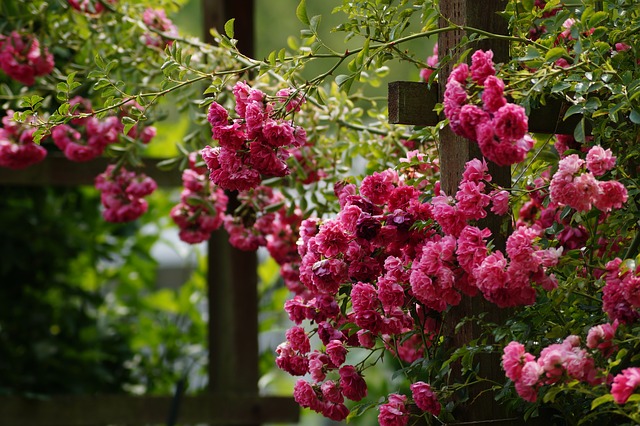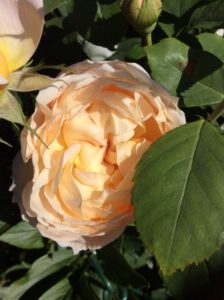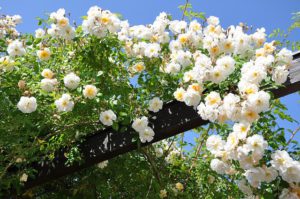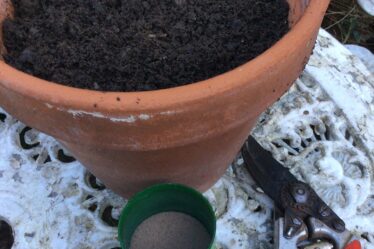
How Do You Grow Roses? Secrets To Success
Roses are quintessentially English and to my mind a garden is not quite complete without them. The sheer diversity of roses, their colour, type, form and fragrance makes them an absolute essential addition to a garden. What could be more joyful than catching the perfume of roses on a summer breeze? I am often asked how to grow and get the most from roses… how do you grow roses? Secrets To Success. A Rose is not Rose…..
Some of my clients have expressed a concern that roses are difficult, but this is not so. As with any plant… lavish them with some tender love, care and attention and they will reward you with many years’ of joy.
They compliment any style of garden from traditional to modern/contemporary.
For me they are the ultimate plant to grow for their long-lasting flowering season, huge range of fragrances of differing strengths and their ability to survive in many climates and soil types. Resilient and tough with a beauty that surpasses anything else in the plant world.
How Do You Grow Roses? Secrets To Success
Let me convince you how easy roses can be to grow and maintain.
Rose Bloom Forms
Roses have a huge and beautiful variety of blooms, each with their own character and charm giving a diverse choice of shape and style.
Blooms range from single, open cups, double or semi double to deep or shallow cups.
Rose Scent
There are many types of scent within the beautiful world of roses.
- Fruity – a diverse collection of fragrance from citrus, berry and exotic.
- Old rose – natural, warm notes, the quintessential rose scent.
- Tea rose – a sweeter scent of violets, fruit and a little spicy.
- Musk – a warm, rich fragrance that can be sweet or spicy, clove is often the dominant scent.
- Myrrh – spicy and warm.
Rose Classification
Shrub roses.

With myriad styles, forms, colours and scents, shrub roses are perfect for pots and containers or grown as hedges. They look well on patios or in beds and borders.
Sub types of shrub roses
English – repeat flowering, various bloom form to choose from. They grow in a natural, bushy, upright or arching habit.
Modern – hardy, robust, repeat flowering with masses of flowers and many choices of colour and fragrance. Reliable and easy to grow.
Old – these vary with single flowering and repeat flowering types. Their natural and bushy growth makes them perfect for borders.
Floribunda – Flowers are usually smaller but abundant in a wide range of colours.
Rugosa – Easy to grow with open, single blooms. These roses are wonderful for growing in orchards, wild gardens and around trees or hedges.
Climbing roses.
Ideal for growing over walls, fences, obelisks, pergolas, arches and buildings. Flower Garden Colour Combinations
Mostly repeat flowering and look gorgeous grown against walls and fences or over arches, obelisks and pergolas.

Rambling roses
As with climbing roses they are perfect for rambling through hedges and trees.
Little training is required for these to ramble wonderfully over buildings and walls. They produce many blooms and have the added autumn interest of colourful hips.
Standard roses
Theses are best grown in pots and containers placed by a doorway, containers for patio or garden displays, beds, borders and by pathways. They bring their blooms to eye level and create fabulous focal points.
General Rose Care How To Grow Beautiful Roses
Feeding your roses will give them a healthy boost in the growing season.
Granular feed is easy to apply as it is sprinkled over the soil and provides much-needed nutrients.
Clear all leaves and weeds from the soil around your rose, sprinkle on granular feed, 30g is sufficient, gently fork in. Water well and mulch.
Planting
Bare root plants will need to be soaked in a bucket of water for at least 2 hours to rehydrate the roots. Potted roses need a thorough watering before planting.
Plant in an area that has plentiful sun but shade from afternoon sun in hot climates. Ensure the rose has enough space to spread their roots.
Dig the soil, clearing it of weeds, stones and debris.
Dig a hole big enough to accommodate the roots.
Break up the soil at the bottom of the hole with a fork and add some soil improver, compost or well rotted manure also mix some into the soil that you removed.
To stimulate root healthy root growth, sprinkle with mycorrhizal fungi.
Position the rose in the centre of the hole with the bottom of the stems 2in below the rim of the hole.
Backfill around the roots and firm the soil around the rose.
Water well.
Standard roses require staking, this provides support and strength for the stem and helps to reduce wind rock.
Pruning Shrub Roses Best Secateurs review
Prune new roses by cutting back all stems to approx 12 to 18in from ground level.
Do not prune once flowering shrub roses.
Prune established roses by cutting stems by half. Roses of 5 years’ or older prune stems back to a third.
Take out dead, damaged or diseased stems.
Pruning Climbing and Rambling Roses
Prune new roses lightly and tie in new shoots to the support.
Climbers of 2 to 4 years’ – cut back the previous years’ growth to approx 2-4in from main stem.
Ramblers – Thin out stems, cut back any dead, damaged or diseased stems.
Roses older than 4 years’ – prune out the oldest stems from the base.
Tie in new shoots to the support.
Pruning Standard Roses
Cut back new roses to 12in from the top.
For established roses cut back all stems to a third.
Take out all dead, damaged and diseased stems.
Remove old stems.
Roses are generally healthy plants but can sometimes be susceptible to black spot, rust or mildew to decrease the chances of these diseases developing spray with a Fungus Clear treatment early morning on a dry, still day.
A Year In The Life Of A Rose UK

*Roses wind down for a winter rest period but have been known to flower right through to December in warmer climes.
*Deadhead after flowering.
*Please note that this is general info and areas of the UK differ in climate and weather.
I really hope I have convinced you that roses are easy to care for and are fully deserving of a place in your outdoor green space. They are hardy and tolerant and with some straight forward care and attention they will give years’ and years’ of pleasure. Please share this article with friends and family and offer your ideas and thoughts in the comments box below.

Happy Gardening





This was very helpful, thank you. I do have a question for you. My roses tend to get diseased through the growing season, they start out great but then I start losing leaves. Can you be more specific on the type of spray I should get to prevent the disease? And how often do I need to apply it?
Hello Beth, Are you in the UK?
Fungus Clear ultra is a recommended spray in the Uk for black spot, which causes leaf drop. Or products that contain Pencinazole are effective. Spray affected roses about 5 times between April and September without making the leaves too wet, ie no run off.
Remove any infected leaves from the ground and destroy them, don’t put up them in composters.
Hope this helps
Louise
This was very helpful, thank you. I do have a question for you. My roses tend to get diseased through the growing season, they start out great but then I start losing leaves. Can you be more specific on the type of spray I should get to prevent the disease? And how often do I need to apply it?
Tons of value to be found on this post on how to grow rosesThis is a great and simple to follow guide on secret to success. You laid it all out clearly and showed series of examples that helped emphasize your various points. This guide will be very useful for me because I have alot of roses in my compound. I have been applying series of scent like tea rose bit I hope to try fungus clear ultra as you have indicated in your article. This is an eye opener for me.
thanks for sharing
Hi Ola,
Thank you for your kind comments,
I am happy to have helped in some small way with the info in my post, I wish you best luck with your roses,
If you need any more help or guidance don’t hesitate ask.
Louise
Thanks for writing this article on how to grow roses. I find this article so helpful and educative on how to plant roses. I have a garden at my back yard where I grow some flowers including roses but with all the flower plants that are in the garden it is only roses I don’t plant by myself because I don’t know how to do it. I have to call a friend to help me, But reading this on how to plant it I feel delighted to try it myself in pots.
Thankyou for your comments, I do hope you have a go at planting them yourself and caring for them.
Louise
My mother love roses and she always dream of having them grow beside her house. The only problem that holds her from doing so is, her house is located beside the sea, near a beach. She’s afraid that if she plants a rose, it will eventually die because the roots will eventually reach salty water under the ground. Do you think her notion is true? If I can find support to my idea that it won’t affect the plant, then I will encourage her to pursue planting roses around her house.
Hi there,
A good question, but rest assured your mother can grow roses in her garden,
Rosa rugosa, floribundas, hybrid Tea roses will all tolerate coastal conditions provided they are sheltered from winds.
So you can let her know that she can have some roses.!
All the best
Louise
Really interesting and informative web site, it’s obvious you are passionate about gardening.
Keep up the good work and enthusiasm.
Hello Sandra,
Thank you for your comments, yes I am passionate about gardening, and I love to share my passion with others.
Best Wishes
Louise ?